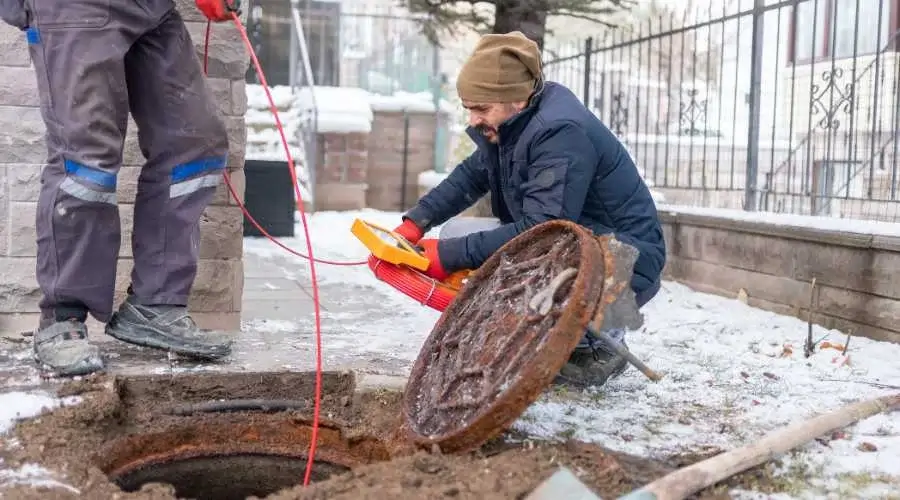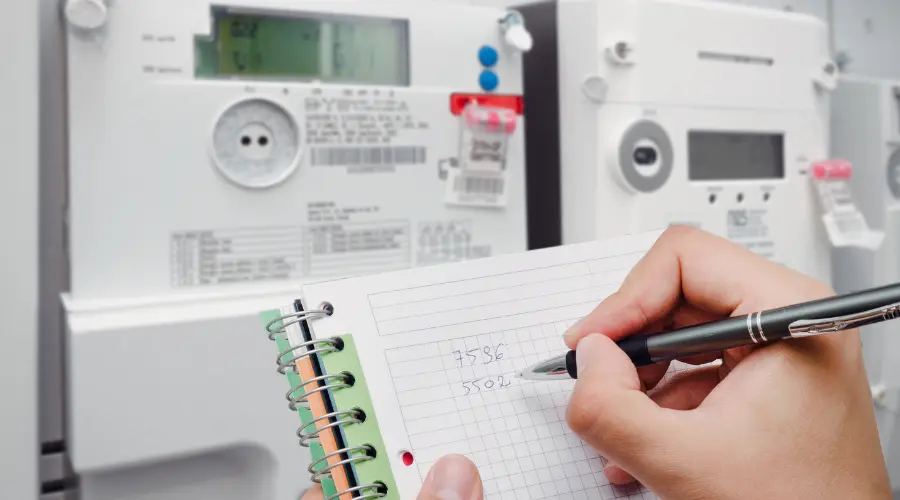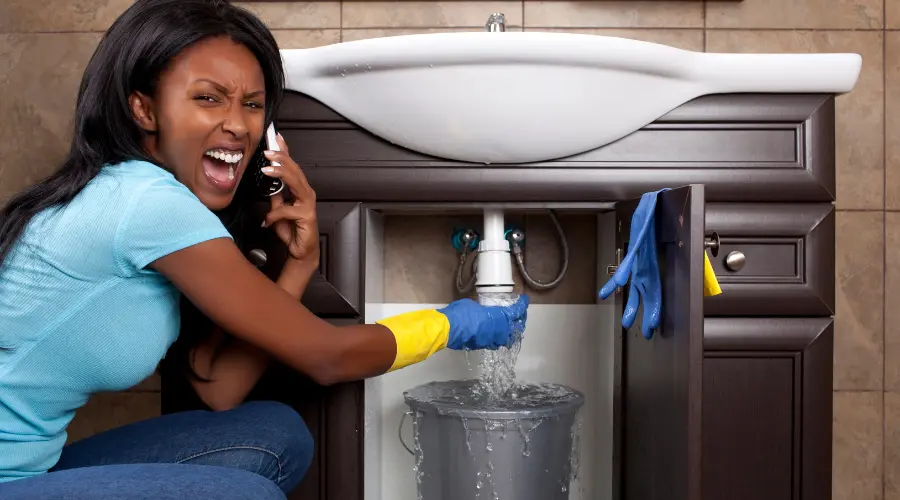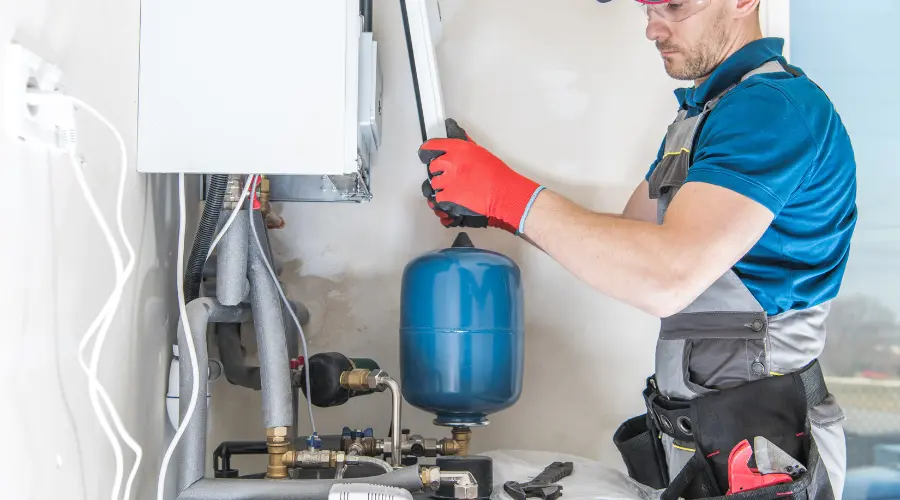Main sewer drains are the backbone of New York and New Jersey’s plumbing infrastructure, ensuring efficient waste removal.
Key Takeaways
- Understanding Sewer Systems: New York and New Jersey utilize combined sewer systems, integrating sanitary and storm sewers to manage waste and runoff efficiently.
- Main vs. Lateral Lines: Main sewer lines are large pipes under streets, connecting to smaller lateral lines from individual buildings.
- Maintenance Responsibility: Property owners are responsible for maintaining lateral lines up to their connection with the main sewer line.
- Common Issues: Blockages can occur due to debris, grease buildup, or tree root intrusion, necessitating regular maintenance.
- Professional Assistance: For repairs and cleaning, it’s advisable to consult professional plumbing services experienced in sewer systems.
Understanding the Basics of Sewer Main Drains
The sewer system in New York and New Jersey is a complex network designed to transport water and waste efficiently. At its core lies the main sewer pipe, typically situated beneath city streets. These pipes are constructed from durable materials such as PVC, cast iron, copper, or bronze, chosen based on factors like pipe size and environmental conditions. The main drain connects to smaller lateral drains from homes and businesses, which usually measure between four to six inches in diameter. Each fixture, including sinks, showers, toilets, and washing machines, connects to these lateral lines, emphasizing the importance of maintaining a clear and unobstructed main drain to ensure the proper functioning of the entire plumbing system.
Types of Sewer Drains in the Region
In New York and New Jersey, the prevalent system is the combined sewer system, which integrates both sanitary and storm sewers. Sanitary sewers transport wastewater from residential and commercial establishments to treatment facilities, while storm sewers handle runoff from precipitation. The combined system channels both sewage and rainwater to treatment plants, where the influx of rainwater helps dilute the sewage, facilitating more efficient treatment and ensuring that the water meets quality standards before being released into the environment.
Distinguishing Between Main Sewer Drains and Lateral Lines
Visualizing the sewer system as a tree can aid in understanding its structure. The main sewer line serves as the trunk, with lateral lines branching off to individual homes and businesses. The main line is the primary conduit for waste, while lateral lines are smaller pipes that connect individual properties to this central system. Damage or blockages in lateral lines can significantly impact the connected properties, underscoring the need for regular maintenance and prompt repairs by professionals when issues arise.
Common Sewer Drain Issues and Repair Solutions
Over time, sewer main drains can encounter various problems, including rust, tree root intrusion, material degradation, or blockages from debris. Property owners are responsible for maintaining and repairing lateral lines up to their connection with the main sewer line. Regular inspections using video equipment can help identify issues early, allowing for timely interventions such as cleaning or pipe lining to restore normal function. Professional plumbers equipped with specialized tools can perform these tasks efficiently, ensuring the longevity and reliability of the sewer system.
The Role of Main Sewer Lines in Wastewater Management
Wastewater from household fixtures travels through lateral pipes into the main sewer system, where it is transported to treatment facilities. Given the high usage, these pipes are designed for durability but can still be vulnerable to issues like tree root intrusion. Municipal authorities in New York and New Jersey are committed to ensuring that wastewater is properly conveyed and treated. After thorough treatment at regional facilities, the purified water is safely released into local rivers, maintaining environmental standards and public health.
Consulting Professional Plumbers for Sewer Main Drain Repairs
Addressing sewer main drain issues promptly is crucial to prevent escalation. Whether dealing with corrosion, blockages, or root intrusion, seeking professional assistance ensures that repairs are conducted effectively. Experienced plumbing services at CBJ Plumbers,offer various solutions, including sectional point repair and cured-in-place lateral pipe lining, to maintain the efficiency of the sewer system. Neglecting these issues can lead to more severe problems, so it’s advisable to consult local professionals for maintenance and repair options.
Frequently Asked Questions (FAQ)
Q1: What materials are commonly used for main sewer pipes?
Main sewer pipes are typically made from materials such as PVC, cast iron, copper, or bronze, selected based on factors like durability, pipe size, and environmental conditions.
Q2: How can I tell if there’s a blockage in my lateral line?
Signs of a blockage in a lateral line include slow-draining fixtures, gurgling sounds from drains, unpleasant odors, or sewage backups. If you notice these symptoms, it’s advisable to consult a professional plumber for an inspection.
Q3: Who is responsible for maintaining the main sewer line?
Municipalities are generally responsible for maintaining main sewer lines. However, property owners are responsible for the maintenance and repair of lateral lines up to their connection with the main sewer line.
Q4: What is a combined sewer system?
A combined sewer system is a type of sewer infrastructure that collects both sanitary sewage and stormwater runoff in a single pipe system, transporting it to treatment facilities before discharging into the environment.
Q5: How often should sewer lines be inspected?
It’s recommended to have your sewer lines inspected every 1-2 years, especially if your property is older or has a history of plumbing issues. Regular inspections can help identify potential problems early and prevent costly repairs.
Q6: What methods are used to clear blockages in sewer lines?
Professional plumbers use various methods to clear blockages, including high-pressure water jetting, mechanical augers, and chemical treatments. The appropriate method depends on the nature and severity of the blockage.
Q7: Can tree roots damage sewer lines?
Yes, tree roots can infiltrate sewer lines through small cracks or joints, leading to blockages and potential damage. Regular inspections and maintenance can help prevent root intrusion issues.




